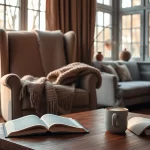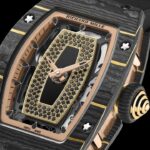
What are LED Light Bulbs exactly?
LEDs are light-emitting diodes (or sometimes called LEDs) that produce light in a way similar to fluorescent, incandescent and compact fluorescent lamp lighting (CFL). LEDs provide more light per watt than other types of light bulbs and are much more efficient than other types. You can buy LEDs in many sizes and forms, depending on what application they are used for.
What are LED Fixtures?
The design of LED lighting fixtures is similar to conventional lighting fixtures. They are designed to work with LED light bulbs. This is in contrast with some traditional light fixtures that are not compatible with LEDs. Ceiling lights, track lighting are just a few examples of lighting fixtures.
LED Light Bulbs vs. Lighting Fixtures
The Structure of the Body
- A typical LED lightbulb looks similar to, or even identical to, a traditional incandescent, fluorescent or compact fluorescent bulb. They can be used with standard-sized lightbulbs and come in many sizes. It is possible, however, that not all sockets support LED lighting. This is particularly true when switching from fluorescent lighting to LED lighting.
- There are many sizes, shapes, designs and styles available for LED lighting fixtures. These fixtures can be used inside or outside buildings depending on how they are constructed. There are many types of fixtures, including lamps, sconces and chandeliers, track lighting, accent lighting, panels, ceiling lights, track lighting, track lighting, track lighting, track lighting and accent lights. Accent lighting and track lighting are two other types of lighting. It is possible that LED lights are already installed, but it is also possible for the bulbs to need to be purchased separately.
Retrofitting existing lighting fixtures with LED lighting is possible. You can convert fluorescent lighting to LED lighting by simply taking out the ballasts and doing some minor wiring.
Both the installation and replacement process are simple.
- The vast majority of LED bulbs can be used in lamps and fixtures that are already in use. It is also easy to take them out and replace. Most of the time, you just need to unscrew the connections. They are easier to install than LED fixtures, especially in rental situations or locations that have restrictions on hardware installation.
- Installing LED lighting should be considered a structural improvement for a house or building. Except for freestanding fixtures, most LED lighting will require special hardware and tools to attach to a ceiling or wall. Although it is more difficult than replacing an incandescent bulb with an LED, the installation of a new fixture allows for greater design flexibility and offers more illumination options.
Standard life expectancy
- An LED bulb lasts on average around 20,000 hours. This is a significant improvement over the lifespan of traditional bulbs which usually last between 1,000 and 10,000 hours (fluorescent or CFL bulbs).
- A long-lasting led wall fixture will last if it is properly protected from the elements and wear that it wasn’t intended to face. An LED fixture that is intended to be used outdoors in an indoor setting may cause rusting and electricity problems. The fixture’s material should last for years if it is properly used. However, the LED bulbs contained in the fixture may need to be replaced from time to time.






